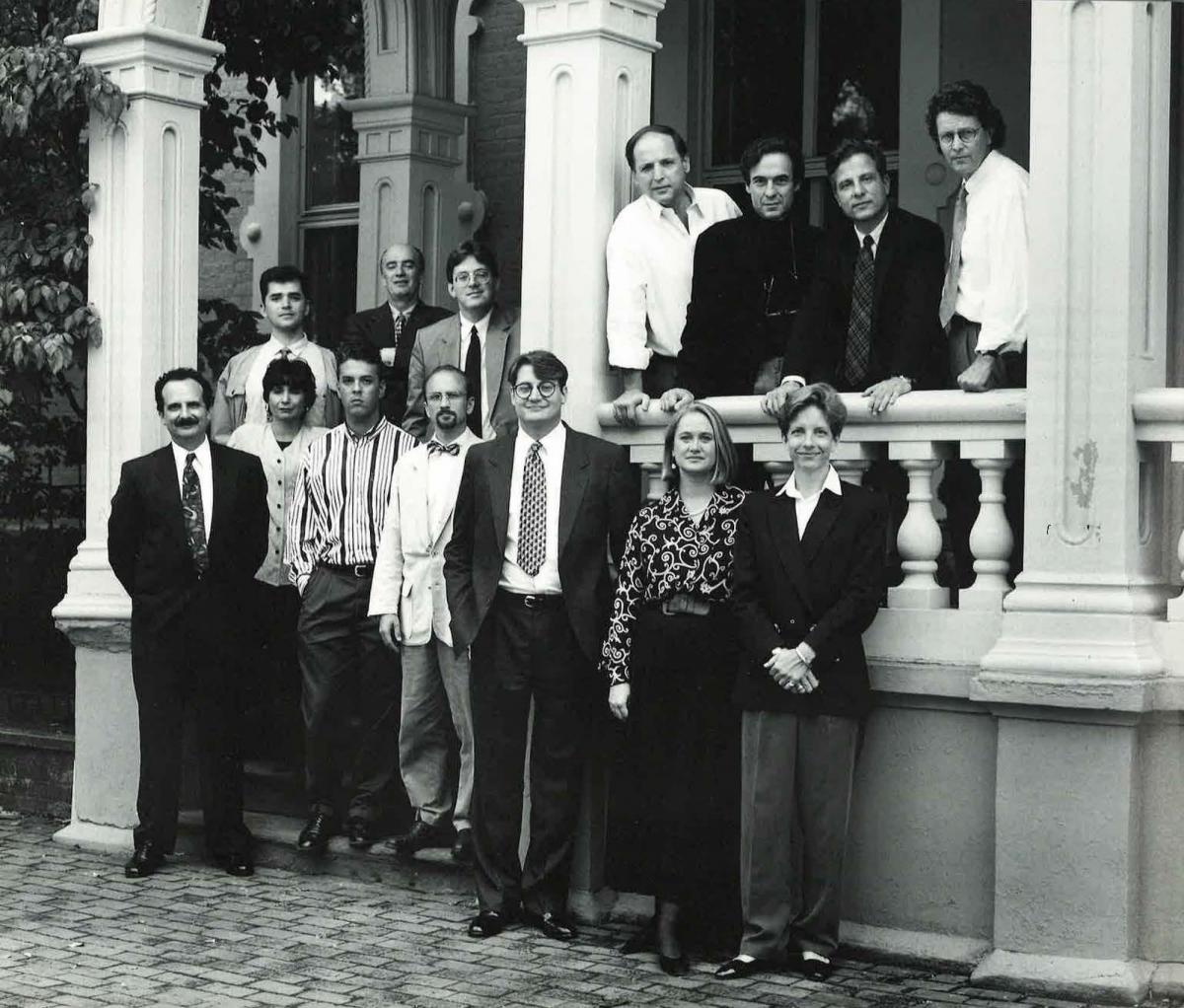New Urbanism grew out of three related urban design ideas—all opposed to the sprawling, anti-urban practices that prevailed in the latter half of the 20th Century. These included urban infill supporting walkable blocks and streets, traditional neighborhood development (TND), and transit-oriented development (TOD).
Stefanos Polyzoides coined the phrase New Urbanism in 1991. The initial series of Congresses were modeled after CIAM, the Congrès internationaux d'architecture moderne—the group that conceived and promoted 20th Century modernist architecture and planning. CNU was organized as a series of Congresses to effectively and comprehensively change the way we design and build the world—and undo some of damage inspired by CIAM, such as “urban renewal” that eradicated whole neighborhoods and streets.

The first Congresses centered on three scales of development—the neighborhood, the block/street, and the region. The architects who hosted the Congresses—Andres Duany and Elizabeth Plater-Zyberk (Alexandia, VA, 1993), Elizabeth Moule and Stefanos Polyzoides (Los Angeles, CA, 1994), and Peter Calthorpe and Daniel Solomon (San Francisco, CA, 1995), became known as the “founders.” Peter Katz, author of the book The New Urbanism: Toward an Architecture of Community (1994) and the first executive director of CNU, was instrumental in organizing the group.
Initiated by architects, CNU soon grew into a collaborative, multidisciplinary organization that joined design practitioners, builders, public officials, writers, nonprofit leaders, and citizens focused on human-scale communities.
Although some New Urbanists saw US-style suburban sprawl as the biggest land-use problem, the decision was made to tackle the “full sweep” of the built environment, from downtown to the countryside. The preamble to the Charter of the New Urbanism begins, “The Congress for the New Urbanism views disinvestment in central cities, the spread of placeless sprawl, increasing separation by race and income, environmental deterioration, loss of agricultural lands and wilderness, and the erosion of society’s built heritage as one interrelated community-building challenge.” The Charter was signed in 1996, at the fourth Congress.
CNU worked hard to focus on cities. One of the early victories was a deal with HUD to create the design guidelines for HOPE VI, the program that remade isolated public housing projects nationwide into mixed-income neighborhoods.
However, the media attention on New Urbanism centered on “new towns” in the suburbs—and real estate investment mostly flowed outside the city at the time. Almost nobody invested in new mixed-use main streets or downtowns in America from the 1920s to the 1990s—a seven-decade long research and development gap.
TNDs like Seaside, Kentlands, Orenco Station, Addison Circle, Habersham, and Celebration served as laboratories for new urban ideas from the 1980s through early 2000s. These private-sector projects created pockets of urban place by overcoming legal and institutional barriers to compact development. Urban-oriented codes, street types, building types, public spaces, and various combinations of these elements were tested in the marketplace—ideas that proved useful when investment began to flow back into cities in the 2000s.
Smart Growth, a cousin to New Urbanism, took root in Maryland in the late 1990s and quickly spread nationwide. Smart Growth focused on government policy and adopted the basic tenets of new urban design. The Complete Streets movement launched in 2003—based in part on new urbanist ideas of pedestrian-friendly streets. TOD, conceived in the 1980s by CNU cofounder Peter Calthorpe, took off in the 2000s as transit agencies and developers discovered the value of transit proximity.
Two trends and a real estate cataclysm impacted New Urbanism in this millennium. The market for mixed-use, walkable places steadily grew—mostly due to the preferences of the emerging millennial generation and empty nester Boomers. The 2008 housing crash dramatically slowed the rate of suburban expansion and opened the door for low-cost methods of jump-starting urban places such as Tactical Urbanism and Lean Urbanism, both initiated by CNU members. Also, the idea of suburban retrofit gained widespread recognition among planners and developers.
As momentum waxes for mixed-use, walkable neighborhoods in this era, the challenge before CNU and its members is to build off the successes of the movement to accelerate the pace of change.


















